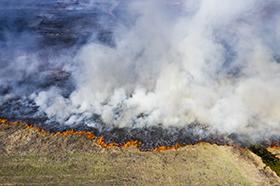Special air quality statement issued for Peel region by Environment and Climate Change Canada

Smoke plumes will move into Peel Region on Tuesday night into Wednesday resulting in deteriorated air quality. Air quality and visibility due to wildfire smoke can fluctuate over short distances and can vary considerably from hour to hour.
Wildfire smoke can be harmful to everyone’s health even at low concentrations. Take action to reduce your exposure to wildfire smoke.
People with lung disease (such as asthma) or heart disease, older adults, children, pregnant people, and people who work outdoors, are at higher risk of experiencing health effects caused by wildfire smoke.
For the current and forecast Air Quality Health Index, and information about how to reduce your health risk and personal contribution to pollution levels access Environment and Climate Change Canada.
Recommended actions
- Stop or reduce your activity level if breathing becomes uncomfortable or you or someone in your care feel unwell.
- Be sure to check on people in your care and those around you who may be more susceptible to smoke.
- Check the Air Quality Health Index and monitor your symptoms.
- Drinking lots of water can help your body cope with the smoke.
- If you have an HVAC system in your home, use the highest rated filter.
- Don’t use an air purifier that generates ozone.
- Take a break from the smoke at a location in your community where you can find clean, cool air.
- Wear a well fitted mask outdoors.
- If you can, avoid smoking or vaping indoors, burning incense and candles, frying foods, using wood stoves and vacuuming.
Get more information about wildfire smoke, air quality and your health.